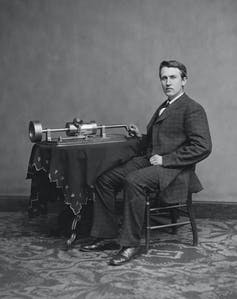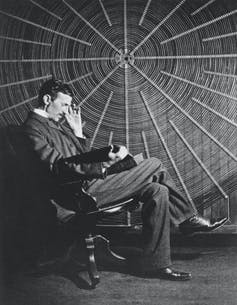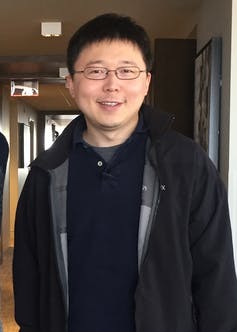Through years of activity in the area of study of cardiovascular diseases and various property and patent registrations, I have learned that scientific-technological invention can sometimes have an “unkind” or “uncomfortable” aspect. Without going any further, the patent for the telephone, the radio, the invention of the laser and the obtaining of aluminum by electrolysis remained in dispute for decades.
What is a patent?
According to Spanish office of the patents and brandA patent is a title granted by the State that gives its holder the right to manufacture and exploit the protected invention by himself or through another person or company authorized by him.
Any procedure, manufacturing method, machine or product can be the subject of a patent. In return, the owner is forced to share the description of his invention so that another expert in the field can also execute it. Its exploitation must be carried out within a period of four years from the date of submission of the application, or three years from the date of publication of the concession (the term that expires later is usually applied). If the patent does not end up being exploited, its license expires.
From 1900 to 1982, the number of patents in the US grew by about 140 percent. From then on, they reached a staggering 400 percent in 2014. However, these data have generated much controversy because the registration of concepts and ideas with little or no real applicability is also allowed.
>
The battle to light up New York
If reading is among the hobbies of those who read this article, I advise enjoying The light of the night by Graham Moore. It is a novel that narrates the so-called “war of the currents” that took place at the end of the 19th century. Brilliantly (pun intended), Moore picks up on the legal and ingenuity contest starring Nikola Tesla and Thomas Alva Edison over the light bulb and electric current patents.
In those years the possibility emerged that electricity would replace steam as an essential element for the operation of any type of engine. It was a second industrial revolution that caused the number of power plants to grow on both sides of the Atlantic.

Wikimedia Commons
The one on Pearl Street, established by Edison in New York in 1882, was the world’s first commercial-type electrical production facility, supplying a small area of Manhattan with direct current. Subsequently, the demand for electricity led to the construction of larger and larger power plants to cover much greater distances. In addition, the rapid distribution of industrial electric motors caused a strong demand for a voltage other than that used for lighting (110 V).

Wikimedia Commons
It was then that the scientist of Serbian origin Tesla, initially hired by the company created by Edison (Edison General Electric Company), demonstrated the ineffectiveness of direct current powers. As an alternative, he proposed its replacement by another type of current: alternating current.
This change minimized energy loss during long-distance electricity distribution. After the development of a system of alternating polyphase generators and other more efficient types of motors and transformers, alternating current ended up being adapted throughout the United States.
This led to Edison’s partner, JP Morgan, to stop supporting his direct current system and away from his own company (which changed its name to General Electric).
However, Tesla’s big mistake was donating all of its patents to its main investment partner, Westinghouse. Later, JP Morgan and Westinghouse would agree to sideline both inventors. Tesla ended up completely ruined and forgotten in the history books, while Edison kept the title of “the father of electricity” exclusively.
The battle for the “cut-paste” of genes
Much more recent has been the fight for control of the CRISPR-Cas9 technique, which allows an easy, fast, cheap and highly precise way to modify the genome at will and thus change destiny written in our DNA. And it is that we are, according to some estimates, before a real gold mine of almost 50 000 million dollars only in applications in biomedicine.

Wikimedia Commons / Bianca Fioretti / Duncan.Hull / The Royal Society., CC BY-SA
In 2014, Emmanuelle Charpentier’s laboratory, in collaboration with Jennifer Doudna’s, discovered how a molecule known as Cas9 could make cuts and insert, delete or modify the DNA of any type of cell. Still, the Charpentier / Doudna molecular scissors are imprecise because, while they do “cut-paste” correctly, they sometimes do so unpredictably.

Wikimedia Commons / PuppyEggs, CC BY-SA
With the aim of increasing its precision, researchers from the Broad Institute of the Massachusetts Institute of Technology (MIT), led by Feng Zhang, improved its function and applicability by obtaining a new variant.
Soon after, the first of several patents was filed by the MIT group covering the use of this revolutionary technique. To do this, Zhang submitted files with the original data from his research as evidence that he claimed confirmed that he had the technology working before his competitors published their own results and applied for their own patents. Added to the controversy generated by this discovery was the fact that the time to obtain said patent was less than 6 months (the normal is 21 months). Later it was shown that MIT had paid very discreetly for all the documentation, estimated at more than a thousand pages, to be reviewed in record time.
Once the patent was obtained, a start-up company founded by Zhang himself bought the user license from MIT. To further complicate matters, there are two other companies with part of the intellectual property or rights to CRISPR-Cas9 pending resolution and the presentation of an interference procedure in the United States has been legally promoted. If this resource prospers, its promoters could gain the exclusivity of this patent.
Currently, although CRISPR-Cas9 can be used in laboratories around the world, its application has entered a recession due to so many doubts and legal issues. Consequently, a great number of investigators are returning to the classic methods of genetic manipulation that, although being more laborious, are also effective.
It is obvious, therefore, that the need to protect intellectual property and inventions through the registration of patents has been gaining strategic importance for many research centers and universities. It is essential, however, that those inventions or technologies that show the greatest impact on the common good are not at the mercy of restrictions or legal conflicts and are quickly made available to society.
Santiago Roura Ferrer, Associate Professor Faculty of Medicine, University of Vic – Central University of Catalonia
This article was originally published on The Conversation. read the original.
Reference-www.eleconomista.com.mx